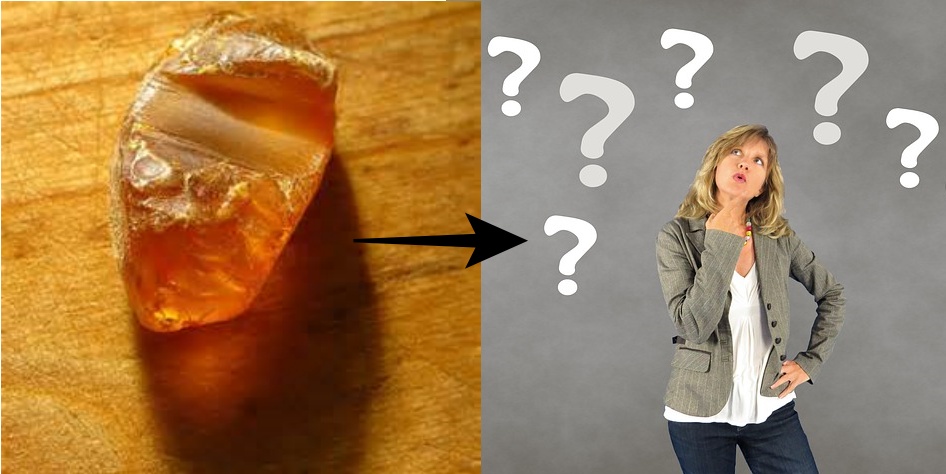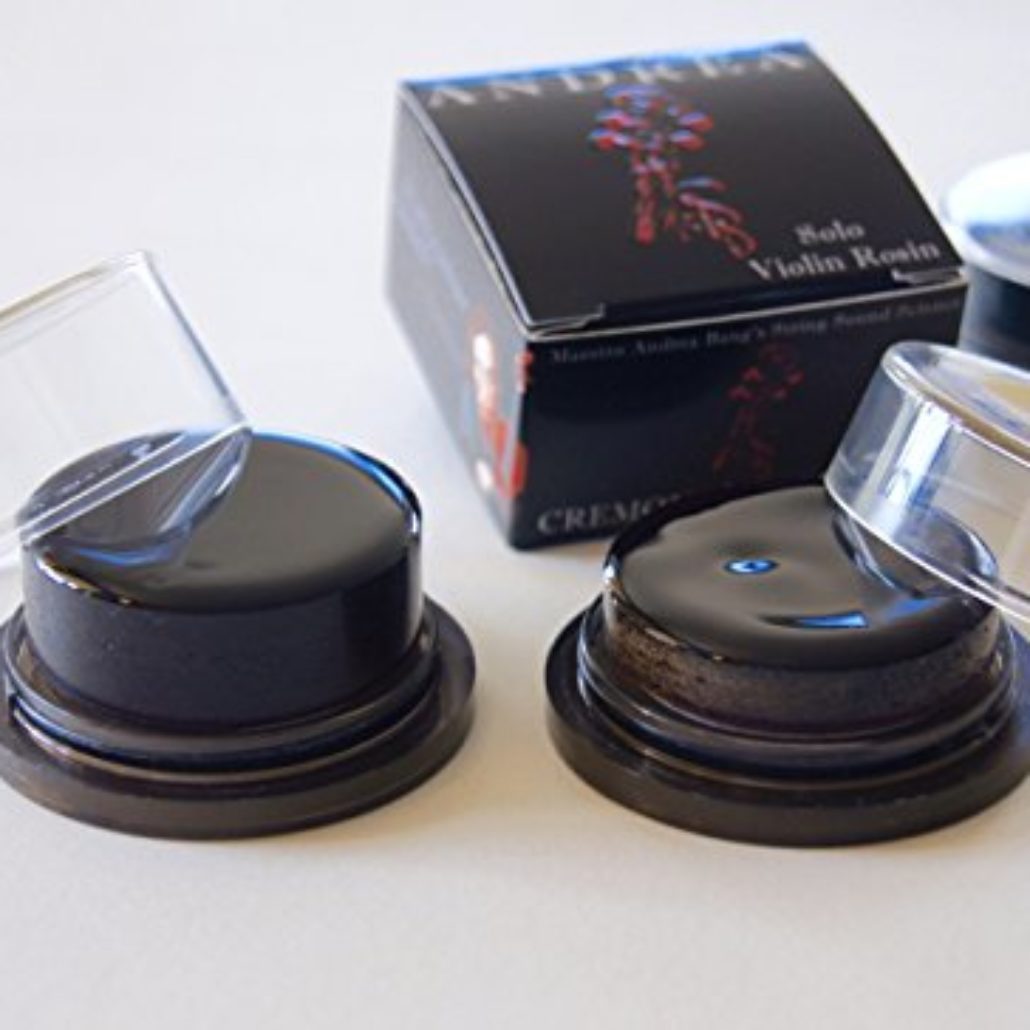What is Rosin?
Rosin is a by product of pine trees that appears initially as a substance called Resin.
Resin is acquired much like maple syrup in that it is collected via a process called “tapping”.
Basically, a plug is placed into the tree and the resin drips out into collectors.

Resin is then extensively heated so that it melts.
This allows manufacturers to purify the formula and additionally, add substances to the mix. Various substances can be added including gums, precious metals, and other resins.
We’ll discuss more on precious metals later.
Following the formulation of the mixture and it’s finish, the rosin is allowed to cool and harden. It is then placed in containers or wrapped in cloth.
Do I Need Violin Rosin?
A resounding: YES. I suggest that every bowed string player find a completely un-rosined bow and un-played string and try to pull the bow across it and make a sound.
What you will find is a a sound that can best be described as whisper.
As far as physics go, the horse hair on the bow and the violin strings don’t naturally produce enough friction between the two surfaces to cause the strings to substantially vibrate.
Rosin is a sticky substance by nature and therefore, when added to the bow, it allows the bow hair to grip the strings better and cause them to vibrate.
A good rosin can elevate the connection you have with your violin and take your playing to another level.

Which Type Of Violin Rosin Is Best For Me?
There are quite a few different rosins to consider.
Very basically, rosins are divided into light and dark.
The lighter the rosin, the less sticky it is. The darker the rosin, the more sticky it is.
Another way of thinking about this is that the darker it is, the better it grips a given string.
However, also remember there there are different rosins for different stringed instruments.
There are certain rosins created specifically for bass, cello, viola, and violin.
Generally, the closer in size two instruments are, the easier it is to use their respective rosins, but I don’t advise using bass rosin on a violin and vice versa.
An old adage is the thicker the string, the softer the rosin. Light rosins are harder and denser than dark rosins.
More to think about
There are, however, multi-instrument rosins.
Additionally, there are seasonal considerations.
The less humidity in your area of residence, the more grip you want on the strings. Therefore, you will want a stickier, darker rosin.
The more humidity you have in your area, the less grip you will need (because humidity naturally adds more grip to your rosin).
Therefore, you will want a lighter rosin with less grip.
Another type of rosin to consider is a type that adds metals to the mixture.
Gold and silver are not uncommon additives for certain rosins, but copper, tin and meteoric iron can also be found. Each one of these additives, according to those who use them, produces a different sonic quality.
For example, gold is said to produce a clear and projecting tone that can also smooth out the sounds produced by harsh instruments. However, each individual you speak with will give you a different reason for using rosins infused with metals. To a certain degree, the effect is determined by the listener.
Now that we have discussed the characteristics of rosin, Im going to give you some suggestions for purchase, should you be in the market.

The Holstein Premium violin rosin is a quality rosin and I had to include it on this list. Comparatively, this is not a purely economical rosin. Having said that, rosins are not inherently that expensive, so I encourage you to look this one up.
This rosin is notable for low dust. However, it’s more than just low dust. This product is also notable for the fact that it does not damage fine varnishes. Depending on the quality of your violin, you may have different types of finishes (as we discussed in our violin article). If your violin’s finish is more of a lacquer, you won’t be terribly affected by rosin buildup. However, this type of finish can also sap your sustain and alter tone.
Varnishes correct this problem and fine varnishes are often damaged by rosin buildup and even certain rosins with additives that eat the varnish. This rosin alleviates that problem.
Additionally, this rosin also delivers a solid grip on the string, but allows you to exercise finesse in your release. In other words, the draw is smooth. This is a quality that all violinists look for in a rosin, but is especially important to soloists who play pieces with a wide range of emotional variety.
This rosin comes with an especially functional case. It snaps on via a magnet in one place and is very protective of the rosin. But that’s not the main plus here. This type of case can be manipulated with one hand and does not impede the application of rosin like cloths or wood holders may. The application process is unobstructed thanks to this innovative case.
On the negative side of things, this rosin has been reported to crack or fracture from time to time. I have never personally had this experience. However, it’s worth noting. Also worth noting is the incredible Fiddlerman customer service. If you receive this rosin and it was fractured in shipment, they are ready and willing to assist you in any way.

The D'addario Kaplan violin rosin is a great economy rosin. Admittedly, there are rosins for less money than this. However, due to their inferior quality, those rosins produce an ungainly amount of rosin dust. Though rosin dust is still present when playing Kaplan Rosin, it is not by any means overwhelming.
This rosin comes in it’s own stylish and functional case. Of all the rosins Ive used, this case has to be one of the most efficient at allowing you to apply your rosin without being harassed by covering cloth or wood casing. As an added bonus, it’s designed to be used one-handed.
You can purchase this rosin in either light or dark. Either type will give you better grip on your violin string.
Remember to take into account all the factors for deterring the type of rosin you need before you place your order. In this way, you can make the best choice for your playing.

This is a wonderful addition to our list. Originally this rosin was made specifically for the Oliv/Evah line of Pirastro strings.
People started using it for all Pirastro strings and then branched out to other brands and realized the excellent formula was viable for any string type.
First off, this rosin is incredibly dark. The pictures online show a more forest green hue, but this product is almost solid black in color. This is not a bad thing, necessarily.
Oliv/Evah rosin is therefore very sticky. You can use this rosin most effectively in wintertime when it’s cold and dry. Additionally, it’s good year round in very arid, dry climates. That said, this is probably the most sticky rosin on the list.
This rosin produces a substantial amount of grip. If you’re looking for more of an attack for your playing, look no further. It’s also been reported that this rosin all but eliminates the “whistle” sound that your “E” string produces from time to time. For the violin, the viola, and even the cello, almost no added pressure beyond gravity is necessary to create a solid connection with the strings.
This rosin is another that is considered “low dust” production. Additionally, it’s reported that this rosin does not have any oil in it, so it cleans more easily off of varnish. Pirastro has been making rosin in Offenbach, Germany for over 200 years, so they bring reputation to the table. At a reasonably affordable price, this is definitely a rosin to check out.

Andrea Solo Violin Rosin comes in either a full cake or a half cake.
This is primarily for pricing, so that you can try out the rosin without spending the full amount.
This is the most expensive rosin on our list. However, it is also highly regarded amongst orchestral players and soloists.
First, the case allows for unobstructed application of the rosin. Many people find that they enjoy this type of case specifically for this reason.
As a performer of over 25 years, I can tell you, applying your rosin only to have it swiped off by cloth behind it is annoying.
But that’s just the first plus. This rosin is extremely potent. In fact, the company suggests only using four (4) full swipes at application. If you’re rosining a fresh new bow, you may need more.
Many people decide that they prefer not to mix rosins and they either clean their bows themselves or have their luthier do it. That’s how much people like this rosin once they’ve used it.
This is another dark, sticky rosin. It produces a good grip, but also allows for a smooth finish.
When you draw the bow across the string, you get a solid connection with minimal effort. If you’re in a wintery, cold, or dry climate, this is another good choice for you.
This is another low-dust rosin. Generally, I prefer them in the first place and if possible, recommend that my students acquire them.
This also means that you will have to employ less effort to clean your instrument.
Many people report that Andrea Solo rosin has a wonderful smoothing effect on their playing.
Even students who have mediocre bows, horsehair, strings, and instruments have said that this rosin made such a difference that their playing was noticeably improved.
I don’t mean the skill as it is impossible for rosin to improve on skill. However, it drastically reduced the scratches that their bows produced as well as reduced the “whistle” effect from high “E” string squeaks.
Again, this is the most expensive rosin on our list, and that may be a deterrent.
Additionally, some distributors online try and defraud customers by advertising a full cake but delivering a half cake, so make sure the seller is reputable.
However, if you’re able, try a half cake and check this stuff out. You’re almost guaranteed not to regret it.
Pros
Cons
WHY WE LIKE ANDREA SOLO ROSIN:
This rosin sits atop my list because it has a smooth draw while simultaneously providing consistent grip on the strings.
I never feel like I’m having to choose between easy playability and good contact between the bow hair and the strings. It’s all there!
Final thoughts
Remember that there are always variables present in your setup. Your choice in strings, bow, bow hair, instrument, and climate will each have their own effects on your decision and what works best for you.
We hope that this information helps you make the best possible choice and that your chosen rosin is everything you hoped it would be!
